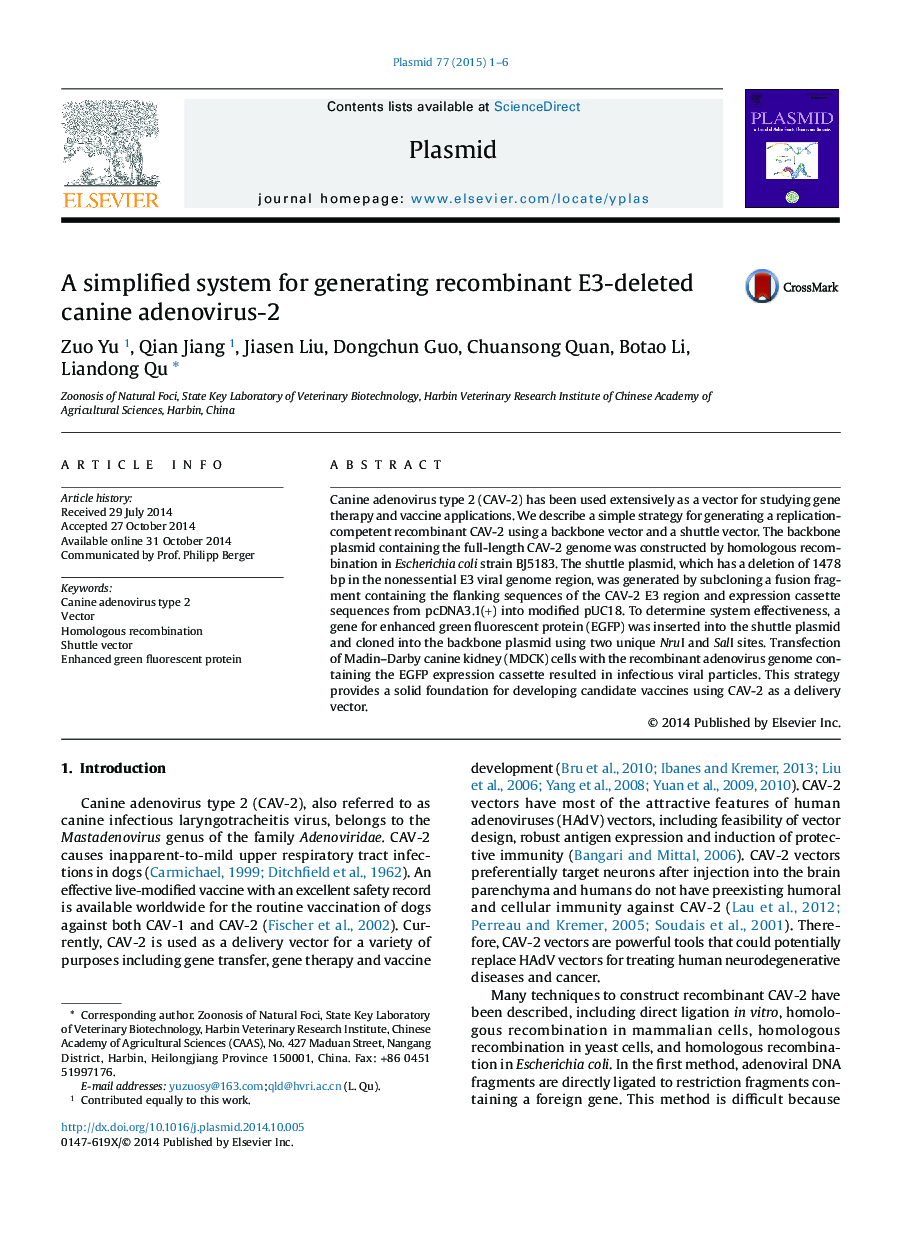| Article ID | Journal | Published Year | Pages | File Type |
|---|---|---|---|---|
| 2824068 | Plasmid | 2015 | 6 Pages |
•A backbone vector containing the entire CAV-2 genome was constructed by homologous recombination in E. coli BJ5183.•A shuttle vector with a larger deletion of 1478 bp in the CAV-2 E3 region was generated using direct ligation.•Recombinant CAV-2 expressing EGFP was developed.
Canine adenovirus type 2 (CAV-2) has been used extensively as a vector for studying gene therapy and vaccine applications. We describe a simple strategy for generating a replication-competent recombinant CAV-2 using a backbone vector and a shuttle vector. The backbone plasmid containing the full-length CAV-2 genome was constructed by homologous recombination in Escherichia coli strain BJ5183. The shuttle plasmid, which has a deletion of 1478 bp in the nonessential E3 viral genome region, was generated by subcloning a fusion fragment containing the flanking sequences of the CAV-2 E3 region and expression cassette sequences from pcDNA3.1(+) into modified pUC18. To determine system effectiveness, a gene for enhanced green fluorescent protein (EGFP) was inserted into the shuttle plasmid and cloned into the backbone plasmid using two unique NruI and SalI sites. Transfection of Madin–Darby canine kidney (MDCK) cells with the recombinant adenovirus genome containing the EGFP expression cassette resulted in infectious viral particles. This strategy provides a solid foundation for developing candidate vaccines using CAV-2 as a delivery vector.
